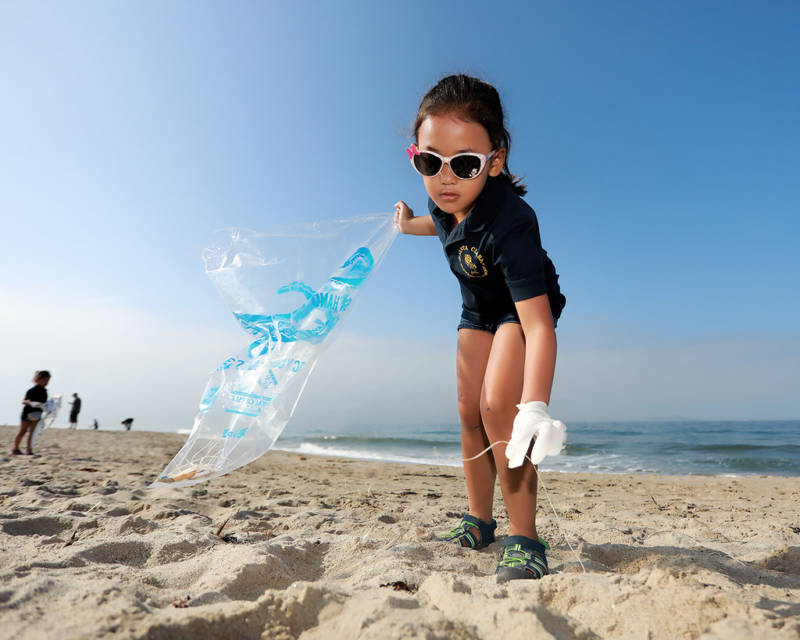It’s a big feat to get 65,000 people to do anything, let alone spend three hours picking up soiled trash.
Yet, state officials are expecting around that number to turn out Saturday for the 35th annual Coastal Cleanup Day. The event attracts volunteers who spread out across more than 1,000 coastal beaches, rivers and parks in 55 of California’s 58 counties. Merced, Sutter, and Trinity counties do not participate.
The cleanup is the state’s largest volunteer event and one of its longest-running. The first beach cleanup took place in 1985. Last year, almost 72,000 people showed up to collect nearly a million pounds of trash and debris in just three hours, said Eben Schwartz, manager of marine debris programs at the California Coastal Commission.
“There’s really a huge impact from this one-day event because we’re able to spread our reach so far into inland California, where much of the trash that is entering the ocean starts,” he said.
The state estimates that over the last three decades, more than 1.5 million people have removed 25 million pounds of trash during the annual cleanups.
To commemorate the anniversary, the commission built a website describing the event’s history, impact, and photos going back two decades.
